 Click Read to start reading Heart’s Gold for free. Read
Click Read to start reading Heart’s Gold for free. Read
 Click Read to start reading Heart’s Gold for free. Read
Click Read to start reading Heart’s Gold for free. Read
Book Review, Detours to Destiny: A Memoir
by Elling Halvorson with Diana Savage and Gerald D. Gawne
Elling Halvorson fought for consciousness, his broken body trapped in a mangled helicopter at the bottom of the Grand Canyon. Was this accident just a huge detour for Elling’s life, or would it prove to be a dead end for him and his business?

As a young man, it seemed Elling had been preparing his whole life to follow his father and brothers into the construction business, but he felt conflicted. Should he follow in his family’s business footsteps, or should he enter Christian ministry? While in college he came to see that this was a false choice. He had inherited the core values for ministry (honesty, integrity, generosity) from his family. But now he saw that he could combine his own construction firm, based on those values, with ministry. That’s what he did, beginning a lifetime of creative, successful business adventures…with many detours along the way.
One of the many hair-raising detours told about in this book was when Elling found himself alone and lost over heavy clouds on the way from Seattle to Northern California. Unable to find any radio signals, and with fuel dwindling, Elling grabbed for the pilot’s manual. At that moment he saw his magnetic compass make a wild spin. At once he realized the metal spine of the book had corrupted the compass setting and he was flying straight west into a watery grave in the Pacific. He recovered course and landed at the right airport, out of fuel and in the nick of time.
In another project fraught with detours and creative solutions, his company built a water pipeline from the North rim of the Grand Canyon to the South Rim. It would be the most crooked pipeline in the world, and it all had to be out of the line-of-sight of tourists. Not only were the challenges unprecedented, but when the project was nearing completion, that area of the Grand Canyon experienced a rainstorm not seen for at least 1,500 years. The flood washed out much of their work and destroyed the machinery. Then, while flying to inspect the damage in the bottom of the canyon, his helicopter crashed. Elling would have forfeited his life except for a series of miracles.
Detours to Destiny tells the tale of his far-flung construction empire, including founding of the popular Grand Canyon Flightseeing helicopter business. It also tells the story of Elling’s birth family and his growing up, then of his own marriage and family, with the detours, challenges, joys, and sorrows that entailed.
Detours to Destiny is a pleasure to read, not only for the exciting “detours” and the fascinating information in it, but also because it’s inspiring to see what God can do with gifts and talents that are given back to him.
A Word from Joan:
Detours to Destiny: A Memoiris a story that was a lifetime in the making. Two lifetimes, if you go back to the parents who so greatly influenced Elling Halvorson and his siblings in their choices of life style and vocation.
Diana Savage, and before her, Gerald D. Gawne, took Ellings’ words and memories and crafted this inspiring tale of family, creative and faith-filled living, and vocational accomplishment.
I especially enjoyed this book because my late husband, Robert W. Biggar, was a construction engineer in Alaska. Permafrost, deep-freeze temperatures, wild animals, and round-the-clock summer daylight were some conditions that made innovation of great importance. Some of my very first stories were written about the creative ways he and other Alaskan workers met the challenges of building roads, airstrips and other infrastructure in the far north.
I felt right at home with Elling’s creative approach to challenges that other people wouldn’t attempt. He may have been a Type A personality, but he had plenty of energy to go around, and his family thrived under his love and attention.
Preview Living Gold here:
Traveling to Kako, Alaska, to research for Living Gold: The Story of Dave and Verz Penz at Kako, Alaska took us on an adventure we’d never imagined we’d experience. It gave us insight into God’s love for people in remote and unknown places, and into the hearts of those who serve God in such places.
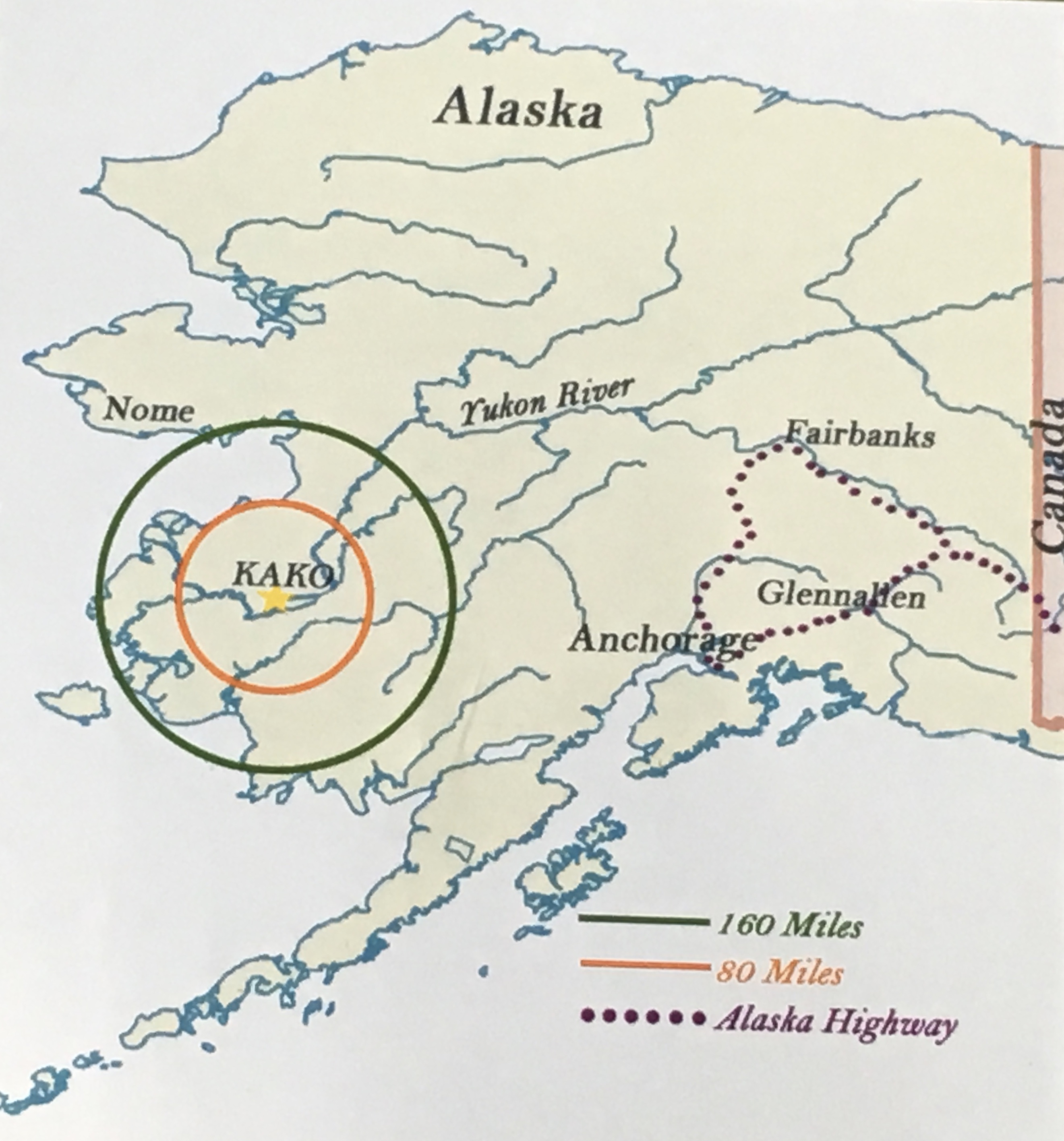

We flew Alaska Airlines from Seattle to Anchorage, caught a smaller plane to the village of Aniak in Western Alaska, then met pilot John Rodkey who flew us in a 4-passenger bush plane to Kako Retreat Center on the Yukon-Kuskokwim Delta.
(Click to enlarge photos)
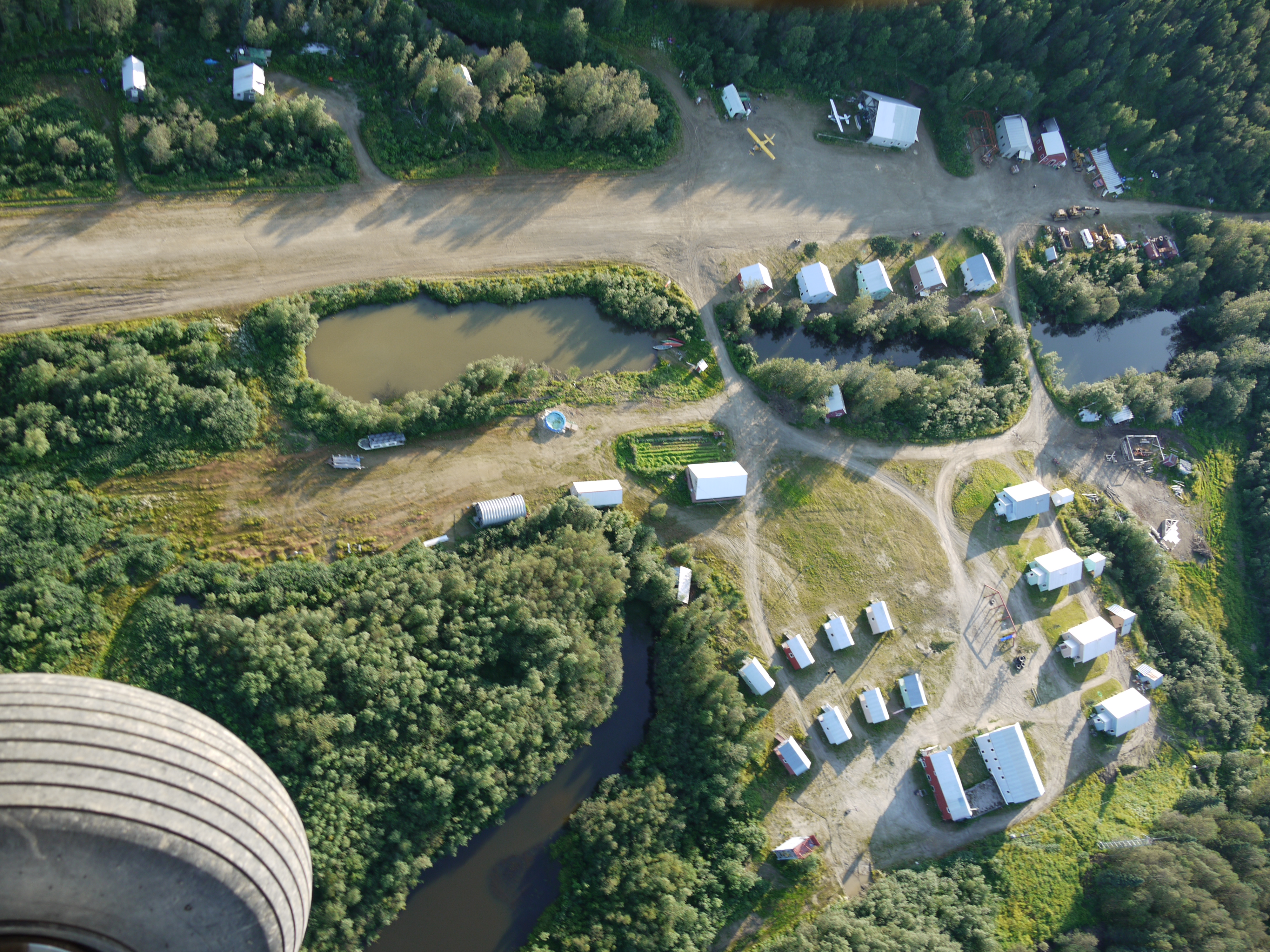


Within a 160 mile radius of Kako live scarcely enough people to fill one of Washington’s small towns. They’re found in over 50 mostly Yupik Eskimo settlements, reachable only by small plane.
Kako’s volunteer pilots bring children and adults from these villages to summer camps and retreats on the site of the old Kako gold mine. We had come for the annual Ladies’ Berry Picking Retreat in August. Tundra surrounds many of the villages. There are neither trees nor berries. The women are thrilled with the natural beauty of Kako and also the chance to pick wild berries for their families’ winter use.


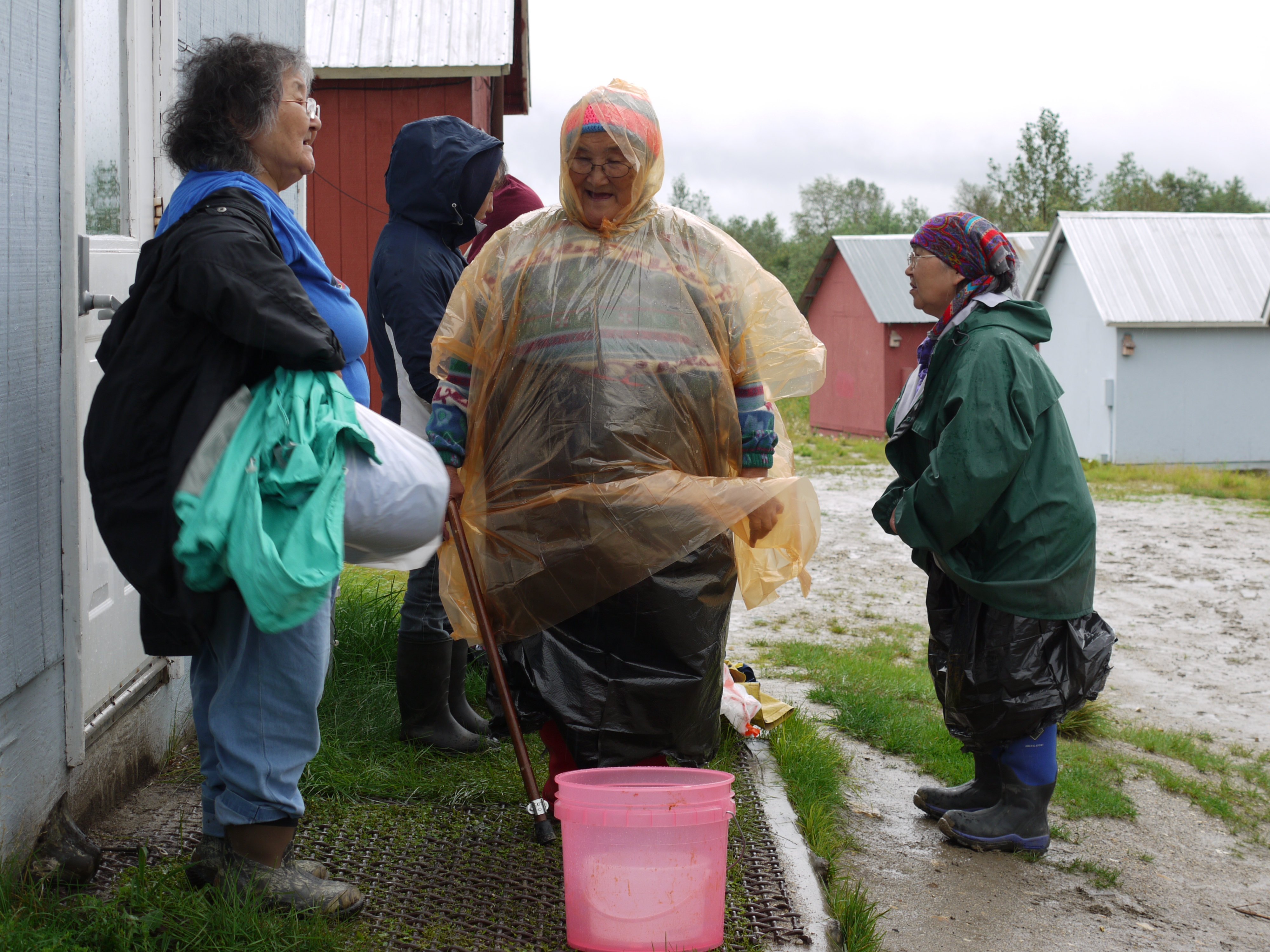
Life in the villages is hard. There are no roads, so people are isolated. Alcoholism and drugs lead to physical, sexual, and mental abuse. Hopelessness gives rise to one of the highest suicide rates in the U.S.A. But time at Kako gives young people a taste of normal childhood. Adults and children alike find Jesus can fortify them against the hardships of poverty and abuse, and give them hope for the future.


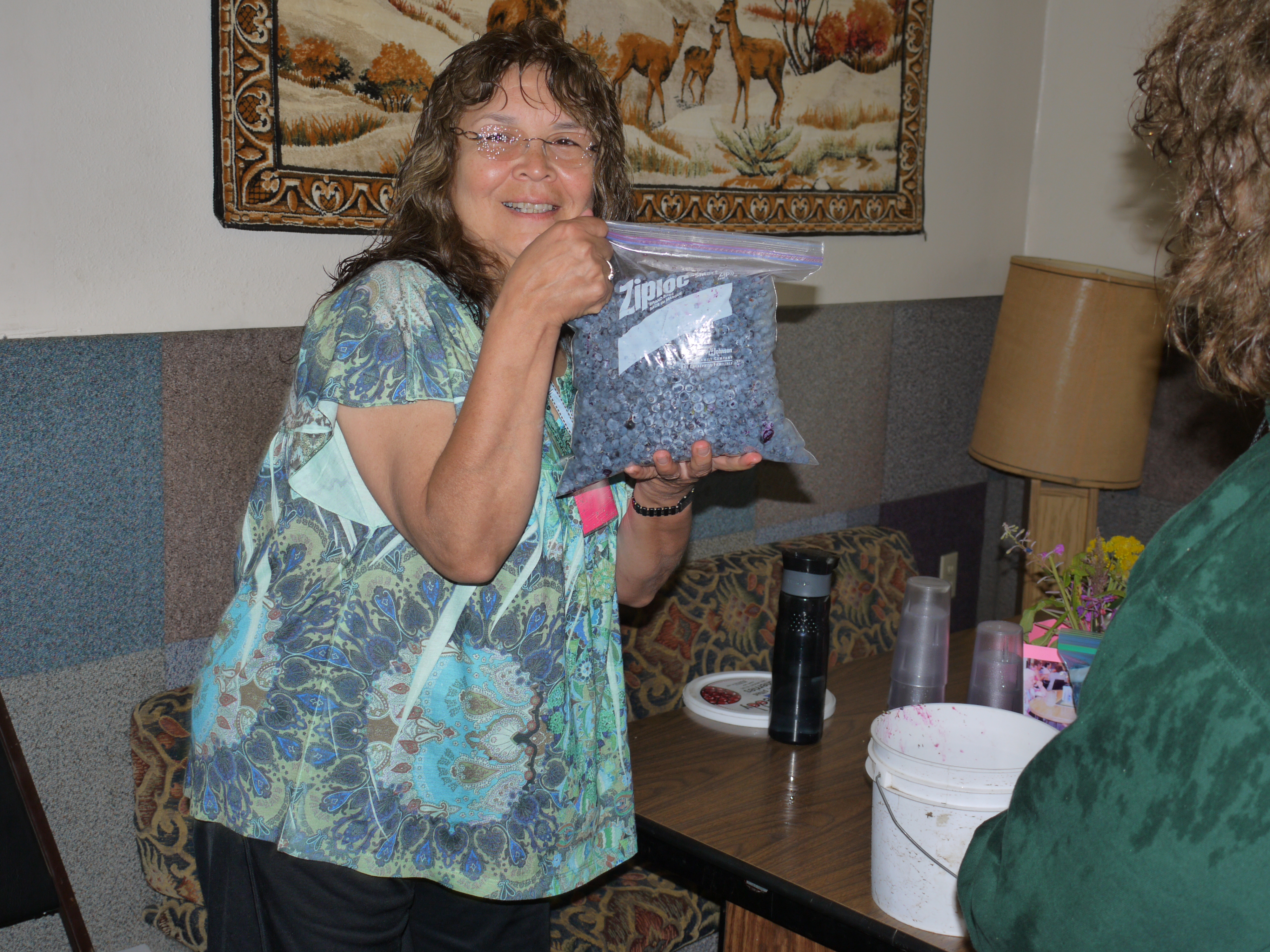

You can read more about Kako in Living Gold: The Story of Dave and Vera at Kako, Alaska. It’s available now in both paperback and Kindle ebook on amazon.com books.
When Nancy Nelson first mentioned writing a book called Stories of Sheer Pure Grace, I tried to picture what those words might describe. When I saw the book’s cover, a colorful, abstract painting donated by Makota Fujimura, founder of the International Arts Movement, I wondered how it illustrated the title.
Art is personal to every observer, but as I studied Fujimura’s painting more carefully, it seemed to me to represent both heaven and earth, connected by bright waterfalls (grace?) pouring from God’s limitless reservoirs into the realm of humanity. His grace brings light and beauty into the darkness below. 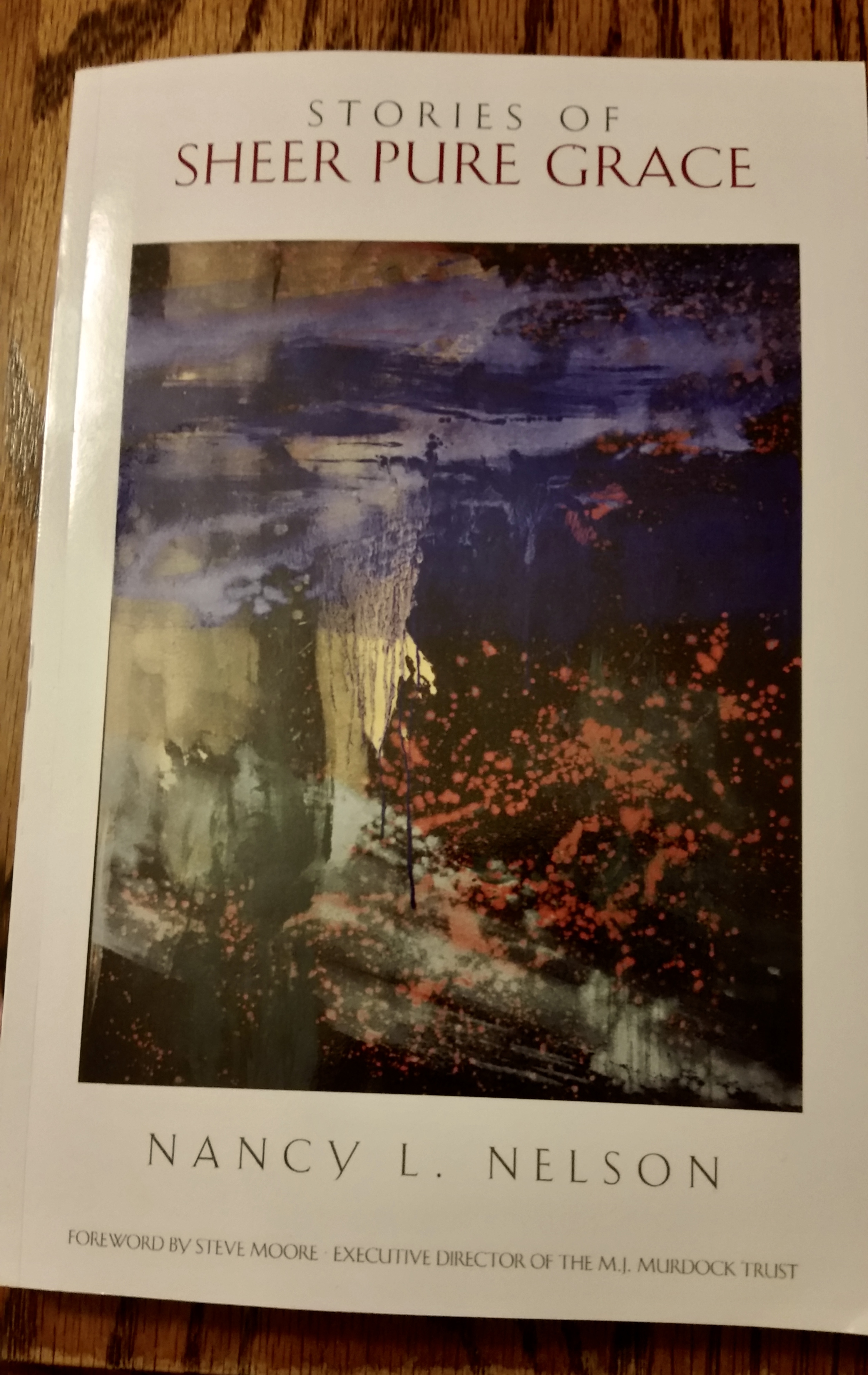
As I read this book, I rejoiced, wept, felt myself being stretched in many areas of my spiritual life. God’s grace toward us bumbling humans is truly sheer and pure, freely poured out on those who seek it. It’s not esoteric or unreachable. It’s absolute, and as Nancy says, surrounds our very souls like a thin, transparent garment, waiting for us to invite it into our lives.
The fifty stories in this book carry the reader along through Nancy’s life as a young believer to the influential leader she is today. Through the stories we learn that God is the Ultimate Match Maker, the Dream Giver, the God Who Answers Prayer…and he’s even PRAZABLE. We watch God at work in her family. We watch him develop Washington State’s Warm Beach Camp and Conference Center into a place of miracles. Through the prayers of his people, God has opened many avenues of ministry to marginalized groups, including inner-city children, Angel Tree children who have a parent in prison, and people with disabilities. We see God transform the summer campgrounds into the world-renowned Lights of Christmas and stand in awe as hurting hearts meet God there.
Through these stories we see God’s sheer, pure grace weaving together his overarching purposes for one woman’s life with events, time, people, and places into a beautiful, ever-expanding tapestry. Knowing that he longs to do that for every one of us is one of the take-aways of the book.
Nancy Nelson and her husband Stan have been on the staff of Warm Beach Camp and Conference Center, near Stanwood, Washington for nearly forty years. Nancy served for twenty years as the Development Director in charge of raising resources for the camp and is now the Director of Donor Relations at Warm Beach Camp. She is also on the faculty for the Murdock Trust’s Essentials of Development Program.
Stories of Sheer Pure Grace, by Nancy L. Nelson, is available through Amazon Books.
All profits from sales will go toward the Special Friends program at Warm Beach Camp for people with disabilities.
We kids learned about the past as we made our own fun.
Growing up in the Robe Valley, Washington, back in the 1940s and ‘50s, we neighborhood children were surrounded by reminders of the history I wrote about in Heart’s Gold, a novel set in Washington State’s gold-mining boomtown of Monte Cristo. To us kids, those reminders were just part of what made our community a fun place to live.
On warm summer days, wearing swimsuits under our clothing, we’d traipse through the woods to our swimming hole. We followed a narrow track that had once been part of the county road that ran from Granite Falls through the valley. The road took us to “Nichols Store.”
The owners had abandoned the two-story, unpainted building sometime after the present road was finished in the early 1940s, but we found ways to wriggle inside and explore the empty rooms. I could barely remember stopping there at age three or four with my parents so they could mail a letter or buy milk.

From the clearing in front rose a long, grass-covered ridge we knew had once been the railroad grade. The Everett and Monte Cristo Railway trains had stopped at Nichols Store on their way to the communities up the valley.
Climbing over the grade, we crossed a decaying bridge spanning a creek full of little fish, then walked on through a park-like area beside the river. Someone had built a picnic shelter there, perhaps in the earlier days of tourist excursions. But no one came for picnics now, except for us kids. The river ran past this grassy space and beyond lay the quiet eddy that was our swimming hole.
The remains of an old railroad-bridge buttress loomed above the hole. A deluge in 1897 had washed away the bridge, along with the dreams of miners and mine owners at Monte.
If no parents were along, after our swim we dared each other to climb up the slanting timbers to the cross pieces on top that had supported the tracks. Cushioned with moss, they made a soft place to dry off in the sunshine. We were careful though. We could feel the trestle wobble beneath us with every movement.

On the riverbank near the swimming hole was another temptation to adventurous kids—an old cable car, still attached to a fraying cable that hung above the river. The cable ran over rusty pulleys that were fastened to sturdy trees at each end. The floorboards were loose. Some were missing. Most of us could see the danger and only speculated about how much fun the ride must have been, once upon a time.
Recently I found a story in Philip R. Woodhouse’s book, Monte Cristo, about what was likely this same cable car. For quite some time following the destruction of the bridge and the railroad through the Robe Canyon, people in Silverton and Monte Cristo held onto hope that repairs could enable mining to start up again.
Temporary repairs did start in the canyon, and while awaiting replacement of the bridge, a Silverton man established his own tongue-in-cheek railroad company—a single push car. Every day he coasted down the deserted tracks from Silverton to a cable tram installed near the site of the missing bridge. Mail and supplies for Silverton were piled on the tram and sent across the river. Then he loaded them on his man-powered push car and pumped his way back to Silverton.
The cable car would have been over fifty years old when a neighbor boy talked my little brother David into taking a ride. They hauled themselves across the tumbling river without losing fingers to the cable or falling through the rotting boards. It must have been a scary trip because once safely on the far side, David refused to get back on. The older boy left him behind and got word to our father about the situation.
Fortunately in late summer, the river was not too high. But it was swift, and the rocks were slippery. Dad waded across and carried a frightened David on his back to the other side. Then Dad destroyed the tram so that no other kids would be tempted.
We didn’t know then how the old bridge abutment or the abandoned cable car tied into the story of Monte Cristo. But as young adults, we got to know the old ghost town up close and personal. It is still a favorite hiking destination for hundreds of outdoor enthusiasts. Robe Canyon and the Stillaguamish River where we played is a well-loved recreation center for many more.
Two tales of long-ago hikes remind us that adventure can still be found in the mountains around Monte Cristo.
In my historical novel, Heart’s Gold, Melinda and Katie Dale, Monte Cristo’s new schoolteacher, go hiking. They take along two of Katie’s future pupils, mischievous brothers Tom and Isaac. The boys discover some acid left in an old miner’s cabin and Tom manages to splash it on himself. He plunges into a nearby pond to ease the burning. Katie thinks they should take him to a doctor:
“It doesn’t hurt as much as it did,” Tom answered. “Can’t we see the lake first?”
“If you’re sure you’re all right. You’ve washed off the acid, so it probably won’t get worse,” Melinda said. “Silver Lake should be just over this rise.”
The subdued boys were glad to follow as Melinda led the way.
A short while later, she stopped, entranced at the scene before her. The trail led across a heathery slope to a deep blue lake surrounded on three sides by steep walls. Among the heather, low bush huckleberries grew thick. The entire scene was backed by a rugged mountain peak, and a breeze springing off snowfields at the base of the cliffs pushed a flotilla of little white icebergs across the rippled surface.
Isaac headed for the nearest patch of snow. “C’mon, Tom. Bet I can beat you.”
Melinda watched Tom limp after Isaac, apparently unable to pass up a challenge in spite of his burns. “Guess it doesn’t matter if Tom’s clothes are wet. They’re both going to get soaked anyway,” she told Katie.
The boys’ whoops echoed from the walls of the cirque as they slid down the snowy slope on the seat of their pants. Melinda and Katie removed their shoes and stockings to wade at the edge of the icy lake.
That fictional incident took place in 1897. Some 60 years later, my younger brother Dave, recently out of high school and working for the Forest Service near our home in Verlot, decided to take a couple of days off to go hiking at Monte Cristo with some friends. He invited younger cousin Bill Wislen to come along.
By then, Monte Cristo was a ghost town. The boys hiked the same trail Melinda and Katie took, past the Boston-American Mine on Toad Mountain. But they passed Silver Lake and continued on toward Twin Lakes. They camped for the night somewhere between Silver and Twin Lakes.
Dave knew that he might be called back to the job early if he was needed. Because he still lived with our parents, he’d arranged a way for Mom to contact him if he got that call. The next morning while the guys broke camp, Dave tuned his transistor radio to a popular call-in station. If he’d received a message to come to work, Mom was to request a certain song to be played. Sure enough, the scratchy voice of the announcer filtering past the surrounding peaks introduced that song, requested by Mrs. Marie Rawlins.
Hurriedly, the young men started back toward Monte Cristo. They were hungry by the time they reached Silver Lake, but had no time to cook something. They grabbed handfuls of the low-bush huckleberries growing near the lake. They also mixed some of their dry cocoa mix into cupfuls of cold lake water.
Cousin Bill said it wasn’t very good, but they gulped it down anyway. His stomach felt sick all the way back to their car. It was a long time before he wanted chocolate again.
When Bill read about Melinda and Katie’s hike, he could imagine every detail because he’d been there too.
Last summer I noticed a snapdragon blossom drooping under the weight of a bee that did not seem at all busy. When I lifted the flower for a closer look, here’s what I saw. The bee had run afoul of this dainty huntress, and she’d never again bumble her way into a nectar-filled bloom.
Some people call these pretty spiders Flower spiders because they often wait inside a blossom for an unsuspecting victim to come their way. Their color varies according to where they hunt…some are yellow or greenish. More often though they are called Crab spiders because they move sideways, like crabs, and they also use their larger, spiny front legs to grasp and hold their prey.
These slow-moving spiders do not spin webs, but rather wait in ambush for their prey to land in front of them. You may find them sitting like a tiny crab, front legs spread, waiting to grasp some unwary insect and inject their paralyzing venom. No need to be afraid though. Their bite is not harmful to humans.
Just a few moments to share from life with Popcorn and Peanut. Enjoy!









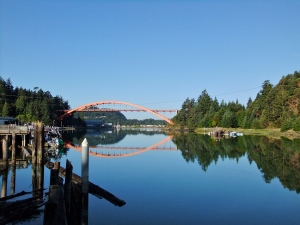
One Sunday afternoon, Hank and I drove north to LaConner for lunch. LaConner is a happy little town, set where farmland and rocky hills meet along a salt-water channel. Most days it’s crowded with visitors wandering in and out of the unique shops along the main street. Our favorite restaurant is popular, with more tables squeezed in than there is really room for. Because of customers at both adjoining tables, we sat side-by-side, facing the big window that separated us from the passersby. That was fine with us, because we could easily hear each other.
With the restaurant activities out of view (and out of mind) behind us, we enjoyed the time together. After we’d shared a wonderful caramel-nut roll like my mother used to make, our waiter wiped away the crumbs and set a slip of paper down between us. “The couple behind you left this,” he said. “They also wanted me to tell you they paid for your lunch.”
Amazed, we turned around, but the couple had gone. The note said:
My husband and I so enjoyed
seeing the sweetness you have for
each other. We have been married
13 years and God has blessed us with
each other. We can only pray we are
you one day, enjoying each others company,
talking, laughing with each other
when we get to be the same age.
Have a blessed day.
Thank you for your open kindness
to each other.
What a reminder that we aren’t invisible. Even when we’re unaware of those around us, people are watching. Our actions can bless and inspire, especially when we let God’s love inform what we do, say, and think.
If you were the couple watching us, we want you to know you also blessed us, not only with your kind words and deeds, but also in reminding us that we should be about our Father’s business in every detail of daily life.
![Maureen by [Trimble, Mary E.]](https://images-na.ssl-images-amazon.com/images/I/51yqyNbf3ML.jpg)
Still grieving the tragic loss of their mother, seven-year-old Leslie Cahill and her teen-age brother Wade become the children Maureen knows she will never have. Over the course of nine years, she becomes an indispensable part of the family. From the beginning she feels attracted to their father, John, although she stifles that emotion, thinking the only way to continue doing her job is to maintain a professional detachment. Through the ups and downs of family life, Maureen fills a vital role as supporter, encourager, and counselor for all the Cahills. But when John seems to be building a relationship with someone else, Maureen wonders how she’ll handle another woman in the household, especially if the other woman is John’s wife.
When the object of Maureen’s long-held bitterness dies, John insists on taking her to the memorial service. He helps her come to a place of forgiveness, and with the forgiving comes freedom . . . to embrace all that life can hold as they look to the future, together.
I liked the way Ms Trimble expands the stories told in Leslie’s viewpoint in Rosemount and McClellan’s Bluff, retelling them from Maureen’s point of view. I enjoyed learning about ranching along with Maureen. The book is populated with a cast of varied characters who could have easily stepped out of any ranching neighborhood and onto the pages of the story. Maureen’s wisdom and thoughtful way of interacting with the young people in her charge make me wish I’d have had her example when raising my own children.
The happy ending was worth waiting for.